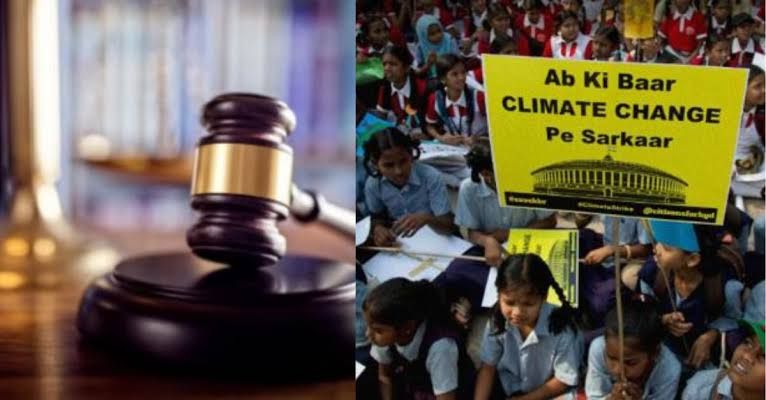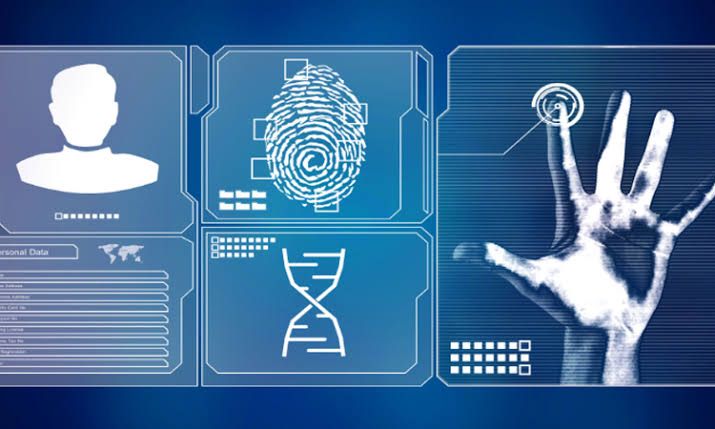G Gopala Krishna
Alliance University
Abstract:
India is distinguished by a greater variety of ethnic and religious groups than any other country in the world. Scholars often describe India as an intriguing nation where diverse communities and religions coexist harmoniously. The Indian populace is polygenetic, forming an extraordinary amalgamation of various races and cultures. In addition to numerous castes, India hosts eight “major” religions, approximately 15 languages with various dialects, and a significant number of tribes and sects.
Politics, which can be seen as the science of government, involves the ethical regulation and administration of a nation or state. It encompasses the maintenance of safety, peace, and prosperity, the defense of a nation’s existence and rights against foreign control or invasion, the enhancement of its power and resources, and the safeguarding of its citizens’ rights, while also aiming to uphold and improve their morals.
Introduction:
Politics is generally considered the art or science of managing governmental or state affairs, encompassing behaviors within civil governments. However, it also extends to various institutions, fields, and special interest groups, such as corporate, academic, and religious sectors. Politics involves “social relations involving authority or power” and the methods and tactics for formulating and applying policy. Modern political discourse often focuses on democracy and the relationship between people and politics, essentially encompassing how people choose government officials and make decisions about public policy.
Globally, political processes have emerged from social environments. Tribes, clans, castes, and classes have historically existed within social organizations. Economic, political, religious, family, and kinship networks have all operated within social structures. A famous philosopher noted that man is a political animal, emphasizing the social aspect of human nature.
In the context of Indian society, which is both multi-ethnic and multi-religious, politics plays a crucial role. Indian religions are often pantheistic, viewing nature as a manifestation of theology. Politics in India is significant for several reasons: it enables efficient country management, ensures good governance, oversees internal development, represents the country internationally, and issues various policies for national welfare.
Caste:
In contemporary India, caste mobilization has become a significant factor in shaping political dynamics. According to Risley, caste can be defined as a collection of families that share a common name, claim descent from a mythical or historical ancestor, follow the same hereditary occupation, and are seen as a single homogeneous community by those qualified to judge. Caste is traditionally associated with one’s birth, although sometimes linked to specific occupations (N.D. Arora, 2010). Through collective action, caste groups have made their presence felt in both politics and administration, especially via the franchise and institutions like Panchayati Raj. Many aspects of Indian political party factionalism, candidate nomination, and election campaigns can be understood through the lens of caste interests and balance.
Caste and the democratic political system represent contrasting value systems. Caste is inherently hierarchical, with an individual’s status determined by birth and reinforced by religious texts, priests, and rituals. Historically, upper castes enjoyed privileges in religious, economic, educational, and political spheres. Customary laws enforced strict rules for women and Shudras while being lenient towards males and Brahmins.
On the other hand, democracy promotes individual freedom and equality, adhering to the rule of law, which applies equally to all, regardless of status. The Indian democratic system, as enshrined in the Constitution, upholds liberty, equality, and fraternity among all citizens and aims to create an egalitarian social order.
The interaction between caste associations and political parties has led to several outcomes. Firstly, marginalized caste members, who were previously disengaged from political processes, became politicized and started participating in electoral politics with the hope that their interests would be addressed. Secondly, caste members divided their support among various political parties, weakening the cohesive hold of the caste group. Lastly, numerically large castes began to gain representation in decision-making bodies, reducing the dominance of traditionally powerful castes. This shift explains the rise in representation of middle and backward castes in many state assemblies.
How caste affects politics:
The interest and awareness of various castes in politics can be examined through four primary factors: caste interest in politics, political knowledge and awareness among castes, caste identification with political parties, and caste influence on political affairs. Rajni Kothari (1970) analyzed the interplay between caste and politics, investigating the impact of caste voting on the political system. He identified education, government patronage, and an expanding franchise as key factors that have integrated caste into democratic politics. Economic opportunities, administrative support, and leadership positions offered by new institutions have drawn castes into the political sphere.
Despite social mobility, the caste system, rooted in notions of purity, pollution, hierarchy, and difference, has historically oppressed Shudras and outcastes, who endured ritual impurity, poverty, illiteracy, and lack of political power. Confrontational identity politics based on caste emerged from the need to provide oppressed groups with state support through protective discrimination. This identity, reinforced by political awareness, is institutionalized by caste-based political parties, which pledge to protect specific caste interests. Consequently, political parties reflect caste demographics, such as the upper-caste-dominated BJP and the lower-caste-dominated BSP (Bhaujan Samaj Party) and SP (Samajwadi Party), with even left parties implicitly following caste patterns in electoral politics.
The politicization of caste identity has had a dual impact on Indian society and politics. It has democratized caste-based social structures but has also hindered the development of class-based organizations. Historically, caste-based discrimination and domination have been significant issues in Indian society. Post-independence, the intersection of caste and politics has allowed previously oppressed groups political freedom and recognition while highlighting the political potential of caste identity. Dipankar Gupta highlights this ambiguity by contrasting Ambedkar’s view, which aimed to eliminate untouchability through reservations, with the Mandal Commission’s perspective, which saw caste as a vital political resource. The Mandal Commission’s approach transformed caste identity into a political asset, sparking confrontations as it intensified Dalit consciousness and challenged the upper castes’ dominance in political and economic spheres.
Religion:
Identity politics that arise from the formation of a group based on a common faith is another kind. A set of cultural or belief systems that connect people to moral principles and spirituality is called religion. Numerous faiths could have texts, sacred sites, clergy, adherents or members, and structured behaviors. A religion’s practices can also consist:
– Rituals
Preaching, Offerings, Holidays, and Funeral Ceremonies
Marriage consulting, Prayer, meditation, art, dance, public service, music, and other facets of human civilization.
Religions often incorporate mythology, which can be leveraged for financial or spiritual gain. It can also be manipulated to control others, either for benevolent or malevolent purposes. Historical records of religious wars illustrate its effectiveness as a political and commercial tool. Religion significantly influences political dynamics in Indian society, with politicians exploiting religious sentiments and using religious institutions to conceal illicit funds.
The surge in Hindu nationalism, the politics of representation, persistent communal views, and competition for socio-economic resources contribute to the development of communal beliefs, which can escalate int o major riots. Since the early 1990s, identity politics based on religion have posed challenges to Indian democracy and secularism, becoming a source of conflict internationally and within India. The institutionalization of majoritarian assertiveness, particularly with the BJP’s coalition government in 1998, consolidated Hindu consciousness into a cohesive political force. This homogenization of religious identity glosses over internal caste, linguistic, and sectional differences within Hinduism and Islam to create a unified religious front.
In Indian culture, religion plays a crucial role. Political leaders, recognizing the need for secularism to maintain national unity, have emphasized inter-religious harmony. Gandhi advocated for brotherhood among different religious communities, and Nehru was a staunch supporter of secularism.
Ethnicity: Physical and social attributes that are common to all members of a human group are referred to as ethnicity. Several social characteristics that are frequently employed to categorise ethnic groups are:
Nationality, tribe, religion, shared language, shared culture, and shared customs
Selective physical and cultural traits that are used to classify people into groups or categories that are seen to be substantially distinct from others are referred to as ethnicity. Ethnicity can also refer to only a vague sense of group identification with little to no shared cultural heritage. On the other hand, certain ethnic communities are cohesive subcultures that share a common language and cultural heritage.
Case Laws:
1. Indra Sawhney & Others vs. Union of India (1992)
- Citation: AIR 1993 SC 477
- Summary: This landmark ruling, also referred to as the Mandal Commission case, addressed the reservations for Other Backward Classes (OBCs) in government employment and educational institutions. Although the Supreme Court maintained the Mandal Commission report’s execution, it also instituted the “creamy layer” idea, which bars wealthy OBC members from enjoying the advantages of reservations.
2. S.R. Bommai vs. Union of India (1994)
- Citation: AIR 1994 SC 1918
- Summary: This case dealt with the dismissal of state governments based on allegations of non-secular activities. The Supreme Court emphasized the secular nature of the Indian state and held that the use of religion in politics is unconstitutional.
3. T.M.A. Pai Foundation vs. State of Karnataka (2002)
- Citation: AIR 2003 SC 355
- Summary: This case dealt with the rights of minorities to establish and administer educational institutions. The Supreme Court affirmed that minorities, based on religion or language, have the right to establish and administer educational institutions of their choice under Article 30(1) of the Constitution.
FAQs:
1. What makes India’s social composition unique in terms of caste, religion, and ethnicity?
India is unique due to its vast diversity, with numerous ethnic and religious groups. It has eight major religions, around 15 languages spoken in various dialects, and a significant number of tribes and sects, forming a polygenetic and multicultural society.
2. How does caste influence Indian politics?
Caste mobilization is a significant factor in Indian politics. Caste groups often assert their interests collectively, impacting political dynamics, candidate nominations, and election campaigns. This mobilization has democratized participation but also led to factionalism and the rise of caste-based political parties.
3. What is the relationship between caste and the democratic political system in India?
Caste and democracy represent contrasting value systems. While caste is hierarchical and determined by birth, democracy promotes individual freedom and equality. The Indian democratic system aims to uphold liberty, equality, and fraternity, striving for an egalitarian social order despite the hierarchical nature of caste.
4. How do political leaders in India use religion?
Politicians in India often use religion to gain political advantage. Religion can be exploited to mobilize support, conceal illicit funds, and manipulate public sentiment. The rise of Hindu nationalism and identity politics based on religion has also influenced political strategies and outcomes.
Plagiarism Report:
Plagiarism report for first 1000 words.
Plagiarism for last 400 words


